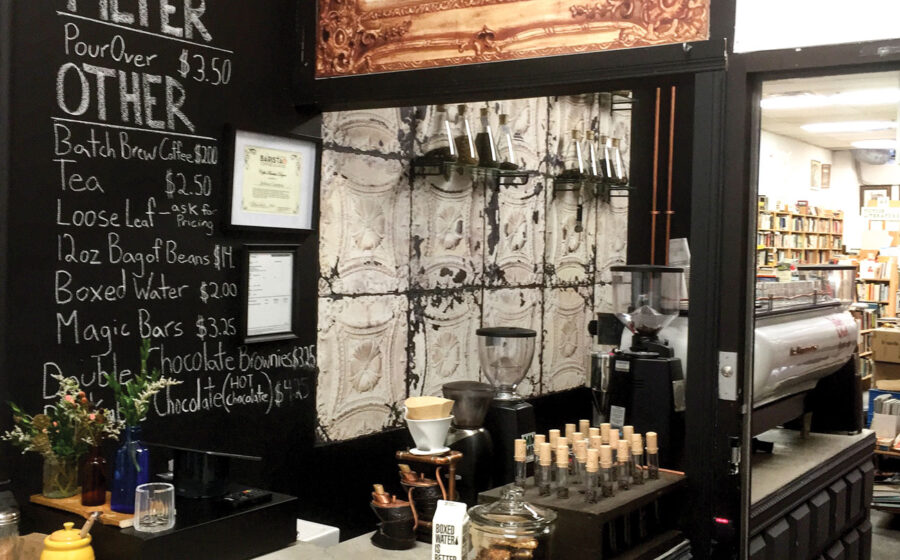[W]hen Joshua Campos first answered the Craigslist ad about an available space for a café inside a bookstore, the space was about half of what he eventually turned into the Coffee Lab. Even at twice the starting size, the café counts as Toronto’s smallest, measuring a mere fifty-two square feet. Cafés based in Winnebagos have bigger floor plans.
Campos moved into Willow Books and built his café last fall, and despite its pipsqueak dimensions it allowed him to offer a wider menu than the Coffee Lab’s first location, a stall in a flea market. “When I moved to this space, I was used to a small space,” he says. “The flea market had a very, very tiny booth. I didn’t have a 220 volt, so I didn’t have an espresso machine.” Even with a refurbished La Marzocco FB70, Campos keeps the menu neat and simple, offering no flavored drinks and sticking to a tight number of preparations.
That’s in line with the necessities of the bar. There’s nothing extraneous in the setup. No brewers that get used just once a week. No merch to keep tidy. No overstock of cups. There is no room for messes and there’s barely room for the refrigerators below the bar. Extra supplies that don’t fit in the small storage space are kept in Campos’ car. Except for espressos, all of the Coffee Lab’s drinks are presented in to-go cups, cutting way down on the amount of drinkware and nixing the need for a dishwasher.
The one expansive element of the Coffee Lab is the number of coffee offerings. Campos regularly changes his coffees, providing customers beans from roasteries like Parlor and Anchor, and always has two single-origins for espressos and often three roasts for pour-over (decaf and batch-brewed coffee are also available). “I always want to have something new to offer the clients, to let them see different roasters, different roast styles, different single origins,” Campos says. The pour-over coffees are pre-dosed in test tubes, which allows Campos to let customers smell the coffees. “I let their nose decide for them,” he says.
In a space that could comfortably fit, often multiple times, in some cafés’ bars, Joshua Campos shows that smallness is no hindrance to giving customers a wide-ranging, sophisticated coffee experience.
1. Cash Box: There’s not room under the bar for the cash box, so a few well-placed vases with delicate flowers and a tidy condiment set keep the black box classy.
2. Grinder Takeover: Grinders always occupy a lot of real estate, but even with a tiny Baratza Virtuoso for pour-overs and a Mazzer Mini for decaf, the two Mazzer Majors dominate the bar.
3. Beakers of Leaves: A wall of beakers hold sixteen different teas and tisanes, all loose-leaf.
4. Revived Espresso: Campos bought this three-group La Marzocco FB70 used and refurbished it, as well as adding a few copper touches.
5. Custom Kettles: There’s not much room to build a visual brand, but copper touches like these gooseneck kettles help. Made in Australia, the crocodile-skin cozies add a bit more flare.
6. Pastries: Campos makes his own pastries, including brownies and magic bars, a concoction that resembles a block of trail mix.
7. Test Tubes: Campos pre-doses pour-over coffee into test tubes, which allows customers to get a whiff of each of the three rotating offerings before choosing.

1. Fridges: Two fridges, one with a freezer, barely fit under the bar, which was limited in width by a nearby door.
2. Bird Bath: This tiny sink took forever to find, and measures just six by nine inches.
3. Sidebar: On the only other counter, a Bonavita kettle is used for white and green teas and a Technivorm Moccamaster covers batch brews.
—Coy Eldridge is Fresh Cup’s editor.

















